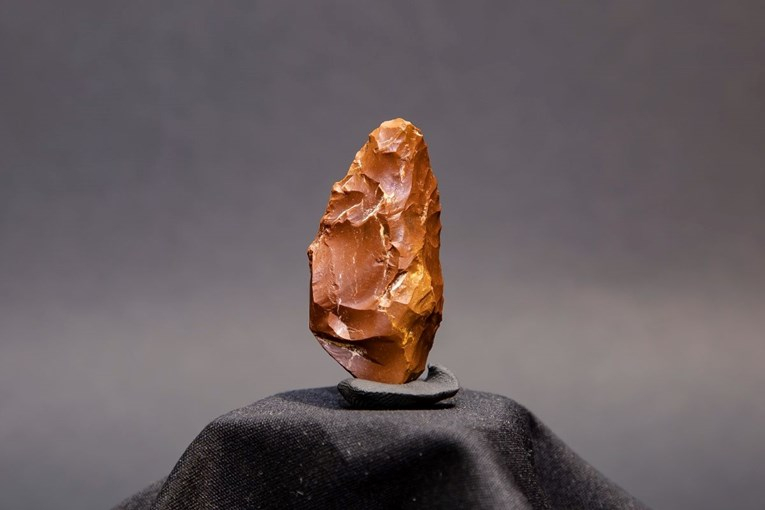Speleologist Hrvoje Cvitanović and archaeologist Jana Frdelja, members of the speleological club Ursus Spelaeus from Karlovac, discovered an artefact that is believed to be a tool used by the Neanderthals in the Mousterian age, reports tportal. Namely, it’s a stone tool referred to as a scraper.
‘As restoration works were being carried out in the entrance part of the Upper Barać Cave, namely as a protective fence was being installed around the existing probe with displayed artefacts, I found a stone tool that seemed very interesting to me right away, primarily because the artefact was located next to a phalanx and a teeth of the cave bear, and secondly, because I have never seen chert [stone] shaped this way except in scientific literature. This was an incidental find, because if we had decided to place the pillars only a few centimetres away, this tool would have remained buried under layers of soil. I felt extremely pleased because we’re talking about a rare discovery that has the potential for further research whose outcome is likely to have not only national but international significance’, said Cvitanović.
Igor Karavanić PhD, a professor at the Department of Archaeology of the Faculty of Humanities and Social Sciences in Zagreb explained the tool was a very interesting scraper made of high quality material.
‘Such tools are typical of the Middle Paleolithic, namely the Mousterian age, which in Europe is always associated with Neanderthals. Sometimes they can date to an earlier period, so it’s difficult to draw conclusions in terms of culture with 100% certainty based on a single artefact, but this is a very typical scraper found in the Mousterian, and given the information I received from those who participated in the excavation, it’s very likely that this is related to the Neanderthal. This would mean that we have another, new Middle Paleolithic site in Croatia where Neanderthals were present for at least a short period of time, judging by the artefact found in the Barać Cave’, said Dr. Karavanić. He’s of the opinion that this discovery should be taken as an incentive for further research, as it gives great value to the site and proves the presence of man in a period which is very attractive not only for national science but on the international level as well.
Together with outside collaborators, the Barać Cave Public Institution revealed the results of recent research, conducted in the cave in 2020 and 2021 with the aim of preservation, maintenance and promotion of natural treasures in the area of Rakovica Municipality.
‘We consider this extraordinary discovery to have potential for further socio-economic development of tourism in our area. Our goal is to achieve recognizable national importance through further exploration of the Upper Barać cave, which should be improved by promoting it on the world tourist market and participating in international scientific events. These results are great motivation for us to continue our research, because truly, wherever we scratch the surface, we find something! After all, caves are the last unexplored areas on Earth. We will not stop here’, said Tihana Oštrina, the director of the Barać Cave Public Institution.
Encouraged by this phenomenal discovery, the institution plans to continue the research in the entrance part to the Upper Barać cave in cooperation with the Ministry of Culture, the Ursus Spelaeus speleological club, the Department of Archaeology at the Faculty of Humanities and Social Sciences in Zagreb and the University of Wyoming in the USA.
A specific goal of theirs is to study the layers of Neanderthal artefacts that would confirm the activity of Neanderthals and help determine to which extent they were present in the Upper Barać Cave; as research is carried out, it will be necessary to confirm there was recurrent activity in the cave.











